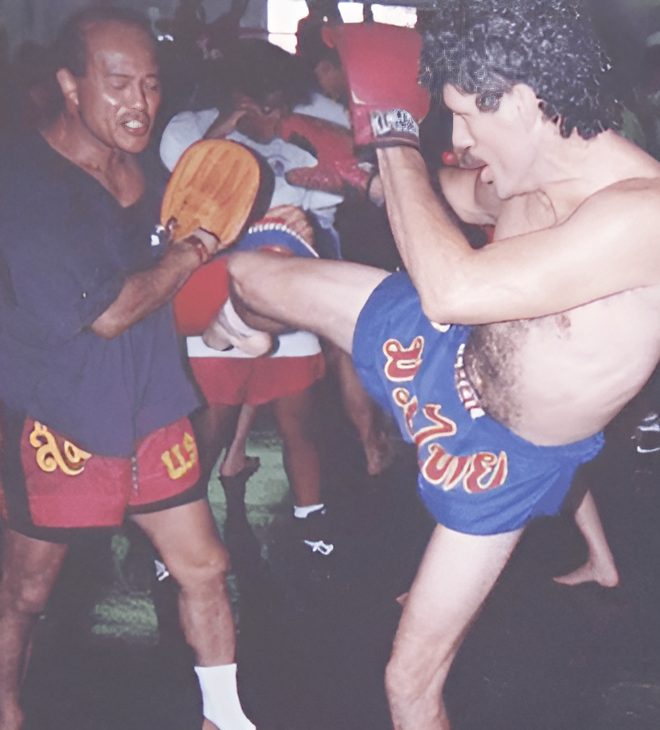The Muay Thai clinch technique is one of the most important and influential parts of Muay Thai. Known as the “Art of Eight Limbs,” Muay Thai involves punches, kicks, elbows, and knees, but the clinch plays a key role in controlling your opponent and delivering intense strikes. If you’re learning Muay Thai or taking Muay Thai self-defense classes, mastering the clinch can help improve your skills and make you a more effective fighter.
Let’s break down the key techniques that make the clinch so powerful and how to use them in training and self-defense.
What Is the Muay Thai Clinch Technique?
The Muay Thai clinch is all about controlling your opponent at close range. In a clinch, you use your arms to wrap around your opponent’s neck and upper body, keeping them close while staying balanced. This control helps you shut down their ability to strike and allows you to deliver powerful strikes like knees and elbows.
Key Elements of the Clinch:
- Control and Grip: You tightly grip your opponent’s neck or shoulders to keep them from breaking free. Firm control helps limit their movement and keep them off balance.
- Head Position: Your head should be close to your opponent’s head or shoulder, so they can’t easily escape or strike.
- Balance: Staying balanced in the clinch is essential. It helps you deliver strikes while staying in control of your opponent.
Techniques for Power and Precision
The Muay Thai clinch isn’t just about grabbing and holding—it’s about using control and technique to deliver powerful strikes. Here are some key strategies to make you more effective in the clinch.
- Knees in the Clinch
Knees are one of the most dangerous and effective strikes in Muay Thai. In the clinch, knees target your opponent’s midsection and can deal severe damage.
How to Throw a Knee: Bend your knees, keep your grip tight, and drive your knee upward into your opponent’s body. Aim for their ribs, solar plexus, or thighs.
Power: Use your hips to generate strength. The stronger your core, the harder your knees will hit.
- Elbows from the Clinch
Elbows are powerful strikes used up close. They can cause cuts and bruises in a clinch, leaving your opponent vulnerable.
How to Throw an Elbow: Keep your elbows close to your body and aim for your opponent’s face or temple. Elbows come from tight angles, making them harder for your opponent to block.
Power: Use your shoulders and core strength to drive the elbow in for maximum impact.
Clinch in Self-Defense
The Muay Thai clinch isn’t just for fighting—it’s also an essential skill for self-defense. In situations where you’re under attack, controlling your opponent at close range can help protect yourself and reduce their ability to hurt you.
- Controlling Your Opponent
In a self-defense situation, the clinch helps you keep your opponent close, so they can’t strike you effectively. By controlling their body, you limit their movement and keep yourself safe.
- Knees and Elbows in Self-Defense
Knee and elbow strikes are particularly useful when someone is close to you. These strikes can cause severe damage and make it harder for your attacker to continue their assault.
- Sweeps and Throws for Balance
In self-defense, knocking your attacker off balance can reduce their ability to continue attacking. Sweeps and trips help take your opponent down, giving you more control over the situation.
Final Statement
The Muay Thai clinch technique is a vital part of Muay Thai, helping you control opponents and deliver powerful strikes. Whether you’re training in a gym or taking Muay Thai self-defense classes, mastering the clinch will improve your skills and make you a stronger, more confident fighter.
By focusing on techniques like knees, elbows, and sweeps, you’ll gain better control, precision, and power—making the clinch an essential tool for both fighting and self-defense.
